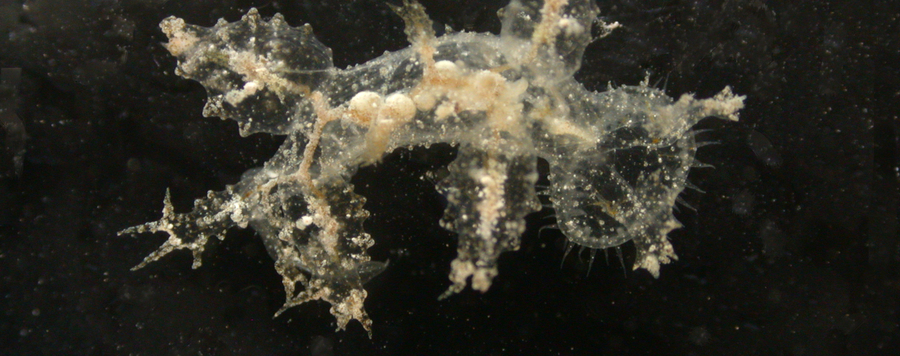
Solar-powered Melibe engeli
For the first time, specimens of the nudibranch Melibe engeli hosting zooxanthellae (Symbiodinium spp.) were cultured for more than 9 months in aquaria in order to study this symbiotic system. Melibe engeli, in contrast to other previously studied ‘solar-powered’ nudibranchs, does not obtain its symbionts by feeding on prey that house Symbiodinium, but as by-catch from the water column. Specimens were exposed to different experimental conditions (nonfeeding vs. feeding, light vs. darkness) to estimate the efficiency of this putative mutualistic symbiosis. Photosynthetic efficiency of Symbiodinium measured by means of PAM fluorometry remained high, independent of experimental treatment. Specimens kept under nonfeeding conditions survived the whole experimental period, grew to modest size and laid fertile egg clutches continuously. Specimens fed additionally with crustaceans and turbellarians grew faster and larger and laid more egg clutches, implying higher fecundity. Symbiodinium density was higher in fed specimens, but is potentially regulated actively by M. engeli through various mechanisms. Fed specimens kept in continuous darkness died relatively soon, suggesting that light is crucial for survival. Histological analyses revealed specialized morphological structures of the digestive gland (‘cisternae’ and ‘fine tubuli’) that house Symbiodinium. These data suggest an advanced state of mutualistic symbiosis that enables M. engeli to survive times of food shortage.





